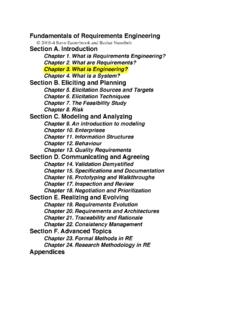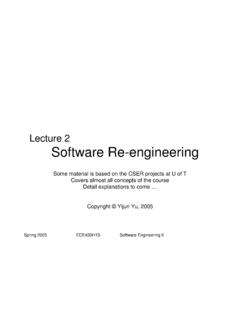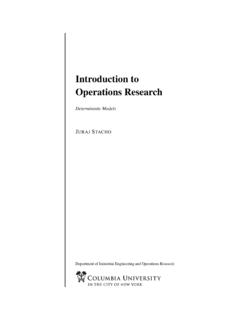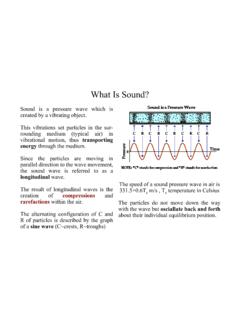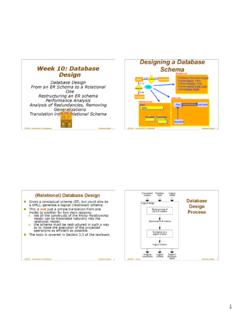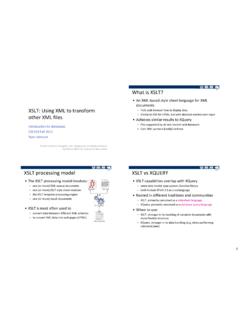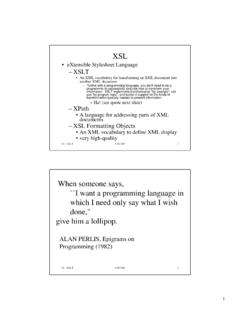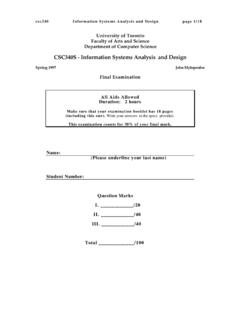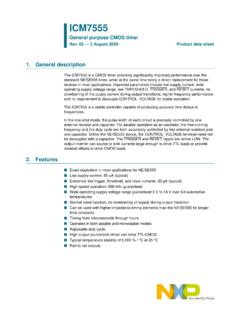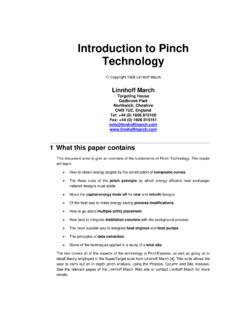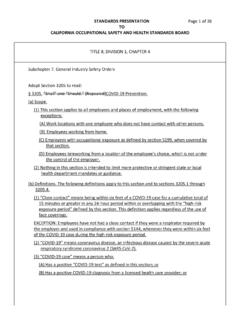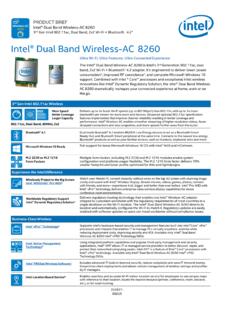Transcription of Boltzmann Machines - Department of Computer Science ...
1 Boltzmann Machines Geoffrey E. Hinton March 25, 2007. A Boltzmann Machine is a network of symmetrically connected, neuron- like units that make stochastic decisions about whether to be on or off. Boltz- mann Machines have a simple learning algorithm that allows them to discover interesting features in datasets composed of binary vectors. The learning al- gorithm is very slow in networks with many layers of feature detectors, but it can be made much faster by learning one layer of feature detectors at a time. Boltzmann Machines are used to solve two quite different computational problems. For a search problem, the weights on the connections are fixed and are used to represent the cost function of an optimization problem.
2 The stochastic dynamics of a Boltzmann machine then allow it to sample binary state vectors that represent good solutions to the optimization problem. For a learning problem, the Boltzmann machine is shown a set of binary data vectors and it must find weights on the connections so that the data vec- tors are good solutions to the optimization problem defined by those weights. To solve a learning problem, Boltzmann Machines make many small updates to their weights, and each update requires them to solve many different search problems. The stochastic dynamics of a Boltzmann machine When unit i is given the opportunity to update its binary state, it first computes its total input, zi , which is the sum of its own bias, bi , and the weights on connections coming from other active units: X.
3 Zi = b i + sj wij (1). j 1. where wij is the weight on the connection between i and j, and sj is 1 if unit j is on and 0 otherwise. Unit i then turns on with a probability given by the logistic function: 1. prob(si = 1) = (2). 1 + e zi If the units are updated sequentially in any order that does not depend on their total inputs, the network will eventually reach a Boltzmann distribution (also called its equilibrium or stationary distribution) in which the probability of a state vector, v, is determined solely by the energy of that state vector relative to the energies of all possible binary state vectors: X. P (v) = e E(v) / e E(u) (3). u As in Hopfield nets, the energy of state vector v is defined as X X. E(v) = svi bi svi svj wij (4).
4 I i<j where svi is the binary state assigned to unit i by state vector v. If the weights on the connections are chosen so that the energies of state vectors represent the badness of those state vectors as solutions to an op- timization problem, then the stochastic dynamics of a Boltzmann machine can be viewed as a way of escaping from poor local optima while searching for good solutions. The total input to unit i, zi , represents the difference in energy depending on whether that unit is off or on, and the fact that unit i occasionally turns on even if zi is negative means that the energy can oc- casionally increase during the search, thus allowing the search to jump over energy barriers. The search can be improved by using simulated annealing (Kirkpatrick et al.)
5 , 1983). This scales down all of the weights and energies by a factor, T , which is analogous to the temperature of a physical system. By reducing T from a large initial value to a small final value, it is possible to benefit from the fast equilibration at high temperatures and still have a final equi- librium distribution that makes good solutions much more probable than bad ones. At a temperature of 0 the update rule becomes deterministic and a Boltzmann machine turns into a Hopfield net. 2. Learning in Boltzmann Machines Given a training set of state vectors (the data), learning consists of find- ing weights and biases (the parameters) that make those state vectors good. More specifically, the aim is to find weights and biases that define a Boltz- mann distribution in which the training vectors have high probability.
6 By differentiating Eq. 3 and using the fact that E(v)/ wij = svi svj it can be shown that X log P (v). = hsi sj idata hsi sj imodel (5). v data wij where hsi sj idata is the expected value of si sj in the data distribution and hsi sj imodel is the expected value when the Boltzmann machine is sampling state vectors from its equilibrium distribution at a temperature of 1. To perform gradient ascent in the log probability that the Boltzmann machine would generate the observed data when sampling from its equilibrium distri- bution, wij is incremented by a small learning rate times the RHS of Eq. 5. The learning rule for the bias, bi , is the same as Eq. 5, but with sj ommitted. If the observed data specifies a binary state for every unit in the Boltz- mann machine, the learning problem is convex: There are no non-global optima in the parameter space.
7 Learning becomes much more interesting if the Boltzmann machine consists of some visible units, whose states can be observed, and some hidden units whose states are not specified by the observed data. The hidden units act as latent variables (features) that allow the Boltzmann machine to model distributions over visible state vectors that cannot be modelled by direct pairwise interactions between the visible units. A surprising property of Boltzmann Machines is that, even with hidden units, the learning rule remains unchanged. This makes it possible to learn binary features that capture higher-order structure in the data. With hidden units, the expectation hsi sj idata is the average, over all data vectors, of the ex- pected value of si sj when a data vector is clamped on the visible units and the hidden units are repeatedly updated until they reach equilibrium with the clamped data vector.
8 It is surprising that the learning rule is so simple because log P (v)/ wij depends on all the other weights in the network. Fortunately, the difference in the two correlations in Eq. 5 tells wij everthing it needs to know about the other weights. This makes it unnecessary to explicitly propagate error derivatives, as in the backpropagation algorithm. 3. Higher-order Boltzmann Machines The stochastic dynamics and the learning rule can accommodate more complicated energy functions (Sejnowski, 1986). For example, the quadratic energy function in Eq. 4 can be replaced by an energy function whose typical term is si sj sk wijk . The total input to unit i that is used in the update rule P. must then be replaced by zi = bi + j<k sj sk wijk.
9 The only change in the learning rule is that si sj is replaced by si sj sk . Conditional Boltzmann Machines Boltzmann Machines model the distribution of the data vectors, but there is a simple extension for modelling conditional distributions (Ackley et al., 1985). The only difference between the visible and the hidden units is that, when sampling hsi sj idata , the visible units are clamped and the hidden units are not. If a subset of the visible units are also clamped when sampling hsi sj imodel this subset acts as input units and the remaining visible units act as output units. The same learning rule applies, but now it maximizes the log probabilities of the observed output vectors conditional on the input vectors.
10 Non-binary units (not required reading). The binary stochastic units used in Boltzmann Machines can be general- ized to softmax units that have more than 2 discrete values, Gaussian units whose output is simply their total input plus Gaussian noise, binomial units, Poisson units, and any other type of unit that falls in the exponential family, which is characterized by the fact that the adjustable parameters have linear effects on the log probabilities (Welling et al., 2005). The general form of the gradient required for learning is simply the change in the sufficient statistics caused by clamping data on the visible units. The speed of learning Learning is typically very slow in Boltzmann Machines with many hid- den layers because large networks can take a long time to approach their equilibrium distribution, especially when the weights are large and the equi- librium distribution is highly multimodal, as it usually is when the visible units are unclamped.
